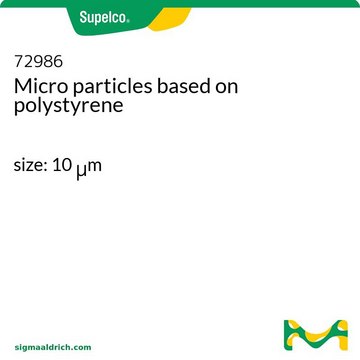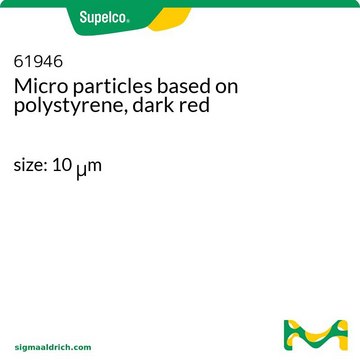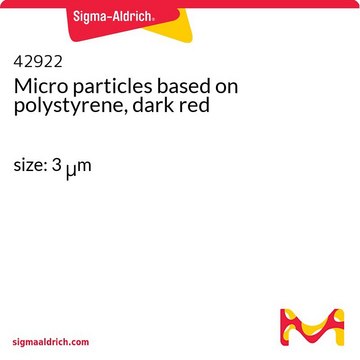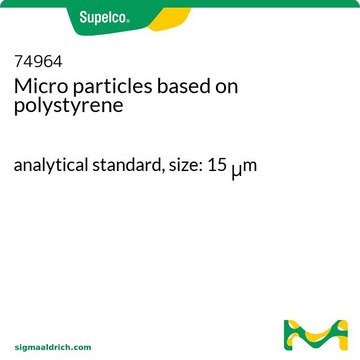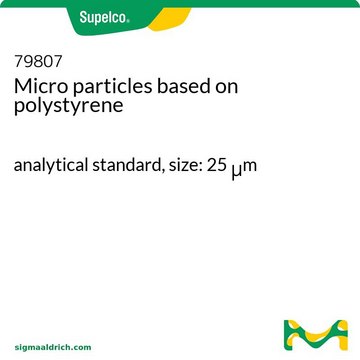55463
Micro particles based on polystyrene, dark blue
size: 10 μm
Synonym(s):
Polystyrene blue microbeads (10 μm), Latex-coated polystyrene beads (10 μm), Latex beads from PS, dark blue
Sign Into View Organizational & Contract Pricing
All Photos(1)
About This Item
Recommended Products
grade
analytical standard
Quality Level
form
suspension (aqueous)
crosslinking
2 % cross-linked
concentration
5% (solids)
particle size
10 μm
bp
30-80 °C
mp
240 °C
application(s)
glass & ceramic
industrial qc
pharmaceutical
format
neat
storage temp.
2-8°C
Looking for similar products? Visit Product Comparison Guide
General description
Ideal for profiling the particle size distribution (PSD) of a particle system.
The particle size of 10 μm is characterized using Coulter multisizer III.
The particle size of 10 μm is characterized using Coulter multisizer III.
Application
Used for standardization and validation of particle size analyzers.
Also used:
Also used:
- to produce a monolayer assembly of colloidal particles for optical microscopy study
- as a model compound for comparison in uptake inhibition assay using A. castellanii trophozoites
Features and Benefits
- suitable for routine instrument calibration checking, testing and corrections
- particle size traceable to Community Bureau of Reference (BCR) standards
- available in 5 mL pack size as a neat sample
Storage Class Code
11 - Combustible Solids
WGK
WGK 3
Flash Point(F)
Not applicable
Flash Point(C)
Not applicable
Personal Protective Equipment
dust mask type N95 (US), Eyeshields, Gloves
Choose from one of the most recent versions:
Already Own This Product?
Find documentation for the products that you have recently purchased in the Document Library.
Toxoplasma gondii: uptake and survival of oocysts in free-living amoebae
Winiecka-Krusnell J, et al.
Experimental Parasitology, 121(2), 124-131 (2009)
All-Aqueous Thin-Film-Flow-Induced Cell-Based Monolayers
Chan YK, et al.
ACS Applied Materials & Interfaces, 11(25), 22869-22877 (2019)
Yau Kei Chan et al.
ACS applied materials & interfaces, 11(25), 22869-22877 (2019-05-31)
Cells in vitro usually require a solid scaffold to attach and form two-dimensional monolayer structures. To obtain a substrate-free cell monolayer, long culture time and specific detaching procedures are required. In this study, a thin-film-flow-induced strategy is reported to overcome
Our team of scientists has experience in all areas of research including Life Science, Material Science, Chemical Synthesis, Chromatography, Analytical and many others.
Contact Technical Service